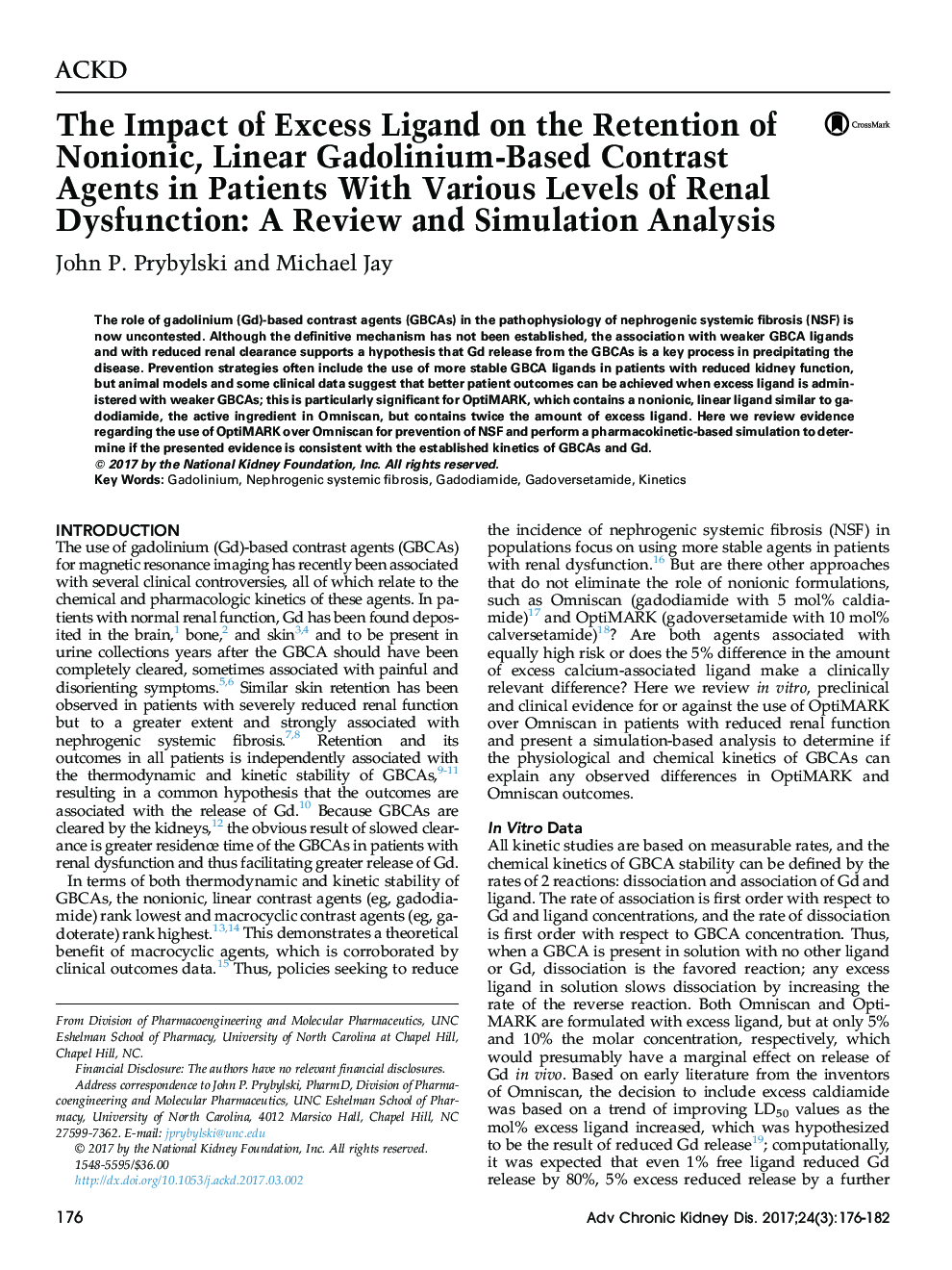| Article ID | Journal | Published Year | Pages | File Type |
|---|---|---|---|---|
| 5685237 | Advances in Chronic Kidney Disease | 2017 | 7 Pages |
Abstract
The role of gadolinium (Gd)-based contrast agents (GBCAs) in the pathophysiology of nephrogenic systemic fibrosis (NSF) is now uncontested. Although the definitive mechanism has not been established, the association with weaker GBCA ligands and with reduced renal clearance supports a hypothesis that Gd release from the GBCAs is a key process in precipitating the disease. Prevention strategies often include the use of more stable GBCA ligands in patients with reduced kidney function, but animal models and some clinical data suggest that better patient outcomes can be achieved when excess ligand is administered with weaker GBCAs; this is particularly significant for OptiMARK, which contains a nonionic, linear ligand similar to gadodiamide, the active ingredient in Omniscan, but contains twice the amount of excess ligand. Here we review evidence regarding the use of OptiMARK over Omniscan for prevention of NSF and perform a pharmacokinetic-based simulation to determine if the presented evidence is consistent with the established kinetics of GBCAs and Gd.
Related Topics
Health Sciences
Medicine and Dentistry
Nephrology
Authors
John P. Prybylski, Michael Jay,
